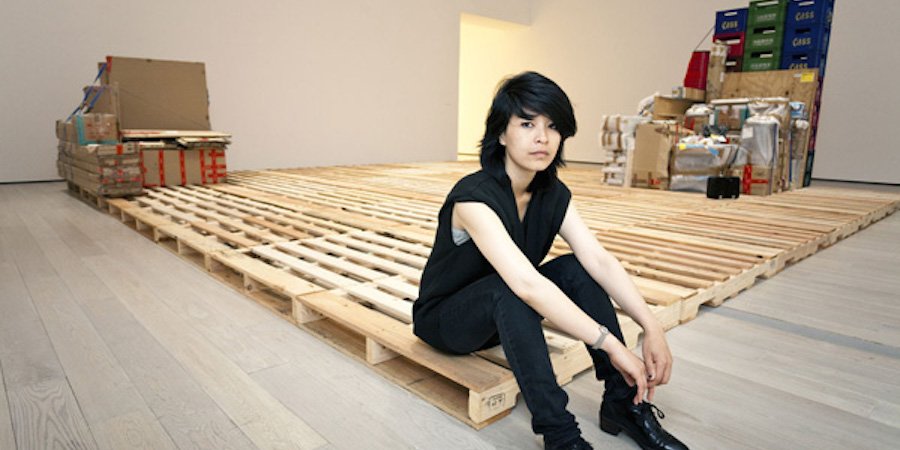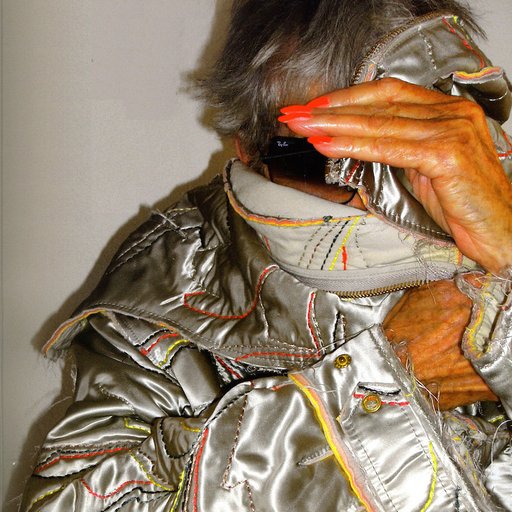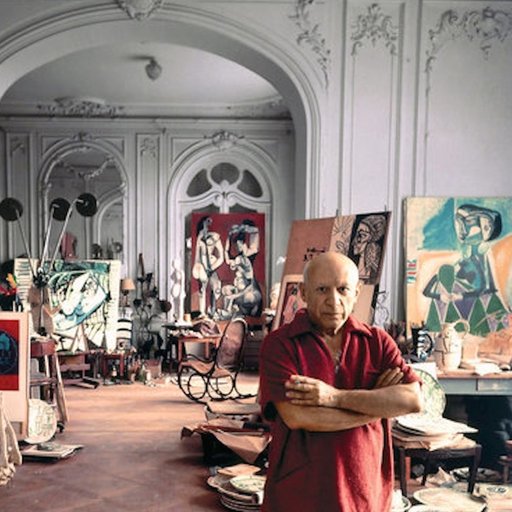HAEGUE YANG
Contemporary Art Museum Houston, December 13 - March 15
This has already been a hell of a year for the Haegue Yang, who has had a dozen showings around the world, from the Tapei Biennial to Art Basel’s Unlimited section to the ICA Boston to the Kunsthaus Bergen to Rotterdam’s Witte de With. Now the Korean artist is rounding out 2014 with an appearance in “Double Life,” a group show at CAM Houston chronicling the subtler ways the notion of performance can be communicated in contemporary art—and Yang’s is subtle indeed, consisting of her trademark household supplies and Venetian blinds constructed into an environment inspired by the location of secret meetings between the American journalist Helen Foster Snow and one of the men who fought to free Korea from Japanese imperialism, a nationalist named Jang Jirak. South Korea’s representative in the 2009 and winner for he Baloise Prize in 2008, Yang is certifiably a rising star.
DAVID WEISS
Swiss Institute, December 11 - February 22
Before David Weiss met Peter Fischli at Zürich’s Kontiki Bar one fateful day in 1978 and forged their legendary collaboration, he had already led a remarkably eventful life. Born the son of a Swiss parish priest, he studied the applied arts—stone-carving, after rejecting home décor—and then did service in his country’s military, sailed the world from Cuba to Tangiers, immersed himself in the psychedelic mysticism of the hippie scene, and ran a macrobiotic health store. For much of this time, Weiss was also making loose, fanciful black ink drawings filled with the cartoonish characters and interest in the wide world around him would come to be reflected in Fischli/Weiss’s greatest work, from the clay figurines of Suddenly This Overview (1981) to their omnivorous Visible World, which debuted at dOCUMENTA X in 1997. These drawings, out of sight for years, will now be the the subject of a posthumous survey—Weiss passed away from cancer two years ago—at the Swiss Institute that should illuminate this valuable period, paving the way for the duo’s upcoming 2016 retrospective at the Guggenheim.
NICOLE EISENMAN
MoMA, December 14-April 5
In the era of Zombie Abstraction, the Scarsdale-born, Brooklyn-based painter Nicole Eisenman is a keeper of the figurative flame, carrying art history’s heroic motifs—the portrait, the cafe scene, the history painting, the phantasmagoria—into the contemporary conversation, like Aeneas with his penates. Though hardly unknown as a two-time Whitney Biennialst, 2013 Carnegie Prize winner, and provocative participant in this year’s Manifesta, Eisenman is this month receiving her due form the high temple of Modernism by being included in MoMA’s “The Forever Now: Contemporary Painting in an Atemporal World.” As the Taxi TV movie critic says: “See it!”
GREGOR HILDEBRANDT
Bass Museum of Art, December 5 - March 29
Visitors to the Bass Museum’s new show from the collection of leather-clad decorator Peter Marino will have certainly encountered the work of the Berlin-based artist Gregor Hildebrandt—after all, one site-specific piece is plastered on the building’s façade while another lines the walls leading to the exhibition. Both of these, as fits the artist’s trademark style, employ shiny black strips of recording tape, the exterior one an outsize portrait of Marino rendered in tape from interviews with the designer and the interior one consisting of ribbons from a tape of Cocteau’s Orphée draping the walls. It’s a prominent showing for an artist who looks about to have a big year, with shows coming up at Perrotin in Hong Kong, Almine Rech in London, and Galerie Wentrup in Berlin.
KLARA KRISTALOVA
Norton Museum of Art, December 2 - March 29
Working in ceramics long before their recent vogue, the artist Klara Kristalova specializes in tabletop sculptures that bring to life the stories from European fairy tales, but not in the comforting, sanitized mode of Walt Disney. No, Kristalova’s sculptures are reminders that despair, disfiguring transformations, and death lie at the heart of many of these stories, invented as they were in a harder, darker time where the majority of people eked out rustic existences a hair’s breadth from paganism. This month, her expressive artworks are taking a breather from the wintry cold of Sweden her adoptive home, to on view in a survey at Palm Beach’s Norton Museum of Art.
XU BING
LACMA, December 20 - July 26
Before there was Fred Berenson’s Emoji Dick, a translation of Melville’s classic into the lexicon of sore-thumbed texters everywhere, Xu Bing was doing pioneering work to test the elasticity of language’s visual expression, writing a novel (Book From the Ground, 2003-2012) entirely in pictograms, painting landscapes out of Chinese characters, inventing a fake language, and creating a calligraphic form of English that looks upon first glance like Chinese. Now his linguistic experiments are coming to Los Angeles with the opening of this month’s “The Language of Xu Bing,” a major show at LACMA that will survey the sweep of the artist’s career.
DOUGLAS GORDON
Park Avenue Armory, December 9 - January 4
Gagosian, December 11 - January 17
The winner of the 1996 Turner Prize and 1998 Hugo Boss Prize, Douglas Gordon is best known for 24 Hour Psycho, a 1993 film that slowed down Hitchcock’s famous slasher to play over the duration an entire day—an adumbration, with a difference, of Christian Marclay’s The Clock. But music is as much an obsession of Gordon’s as cinema, and this month the Scottish artist is filling New York’s Park Avenue Armory with monumental tribute to classical music that threatens not to leave a dry eye (or any other body part) in the house: he’s filling the cavernous space with water to create an aquatic environment for the French pianist Hélène Grimaud to play water-inspired music by Listz, Debussy, and Ravel on two Steinways. To accompany the performance, Gordon’s gallery, Gagosian, is giving over its boutique Park Avenue space a few blocks north to showing Phantom, a 2011 film by the artist that also puts a hyper-theatrical spotlight on another musician, the singer Rufus Wainwright.
TAL R
Cheim & Read at Art Basel Miami Beach
Full of bright colors and childlike imagery, the paintings of the Israeli-born, Copenhagen-based artist Tal R have a simplicity that belies their rich engagement with art history. His paintings are populated by what he terms “kolbojnik” (Hebrew for “leftovers”), imagistic odd and ends that he culls from a broad variety of sources across time. While he’s been widely exhibited in Europe, his footprint in the United States has been slender—which is why it was significant when Cheim & Read brought his work to Art Basel Miami Beach earlier this month as warmup for his solo show at the gallery next year, his latest there since his 2012 outing “The Shlomo.”



























